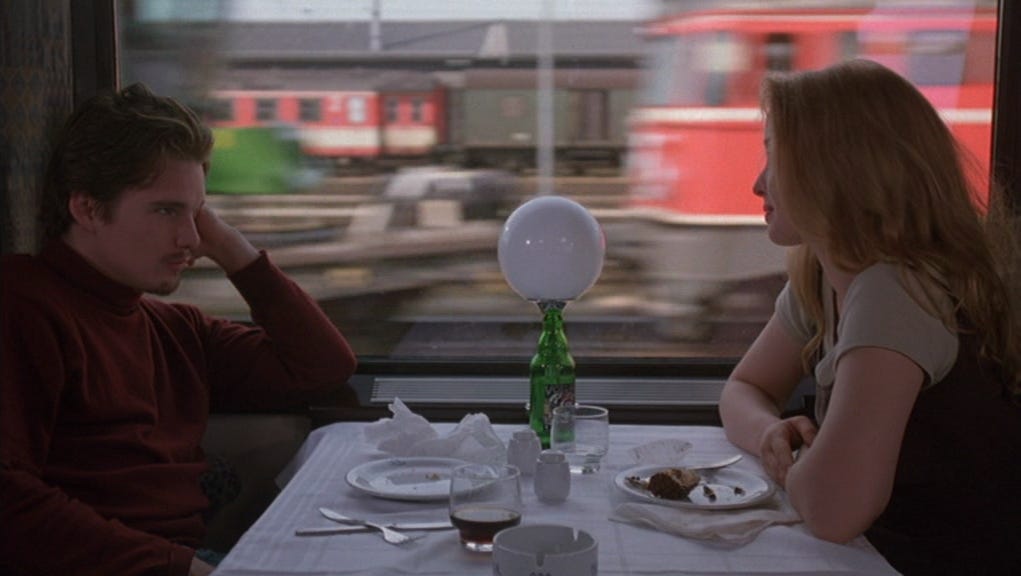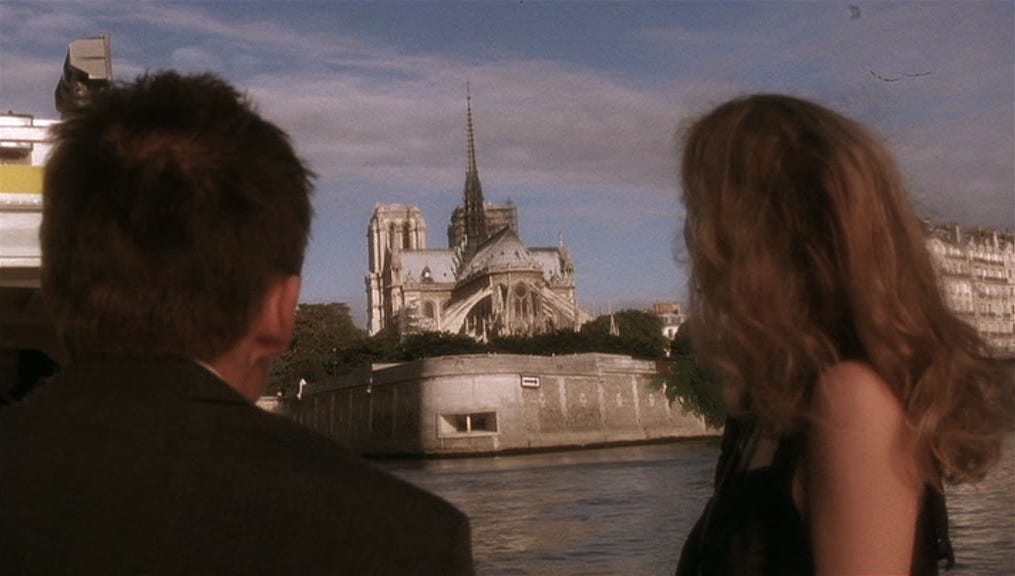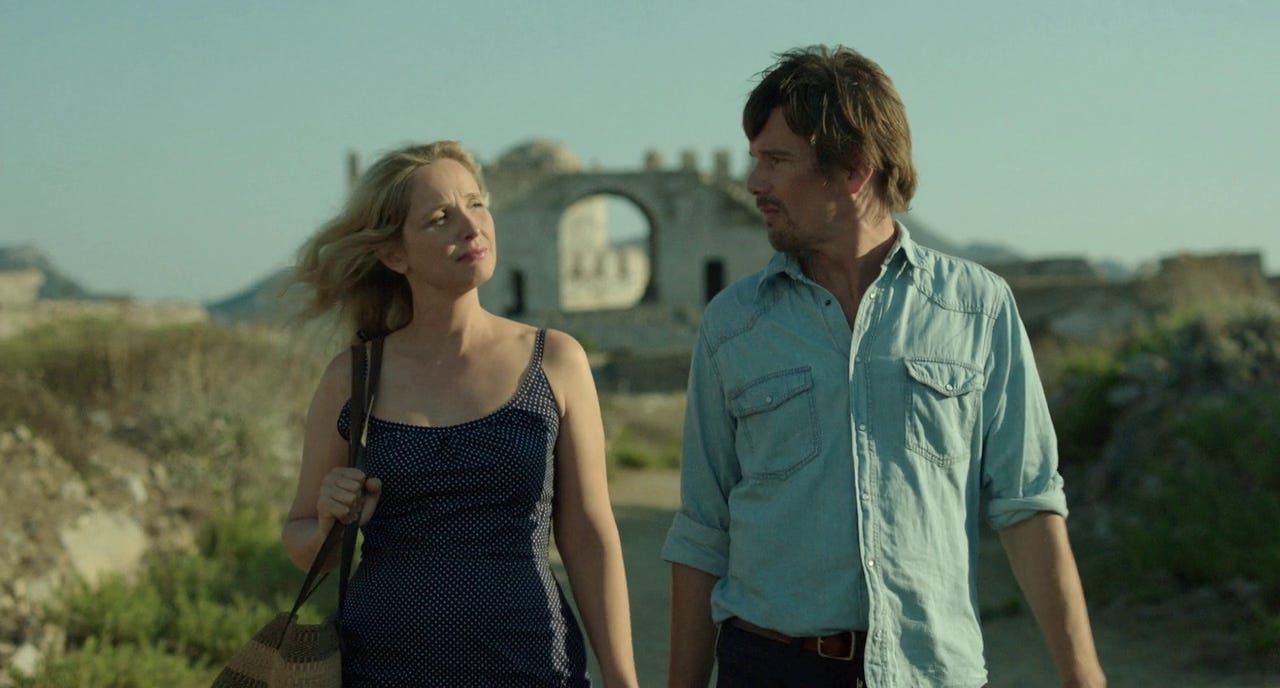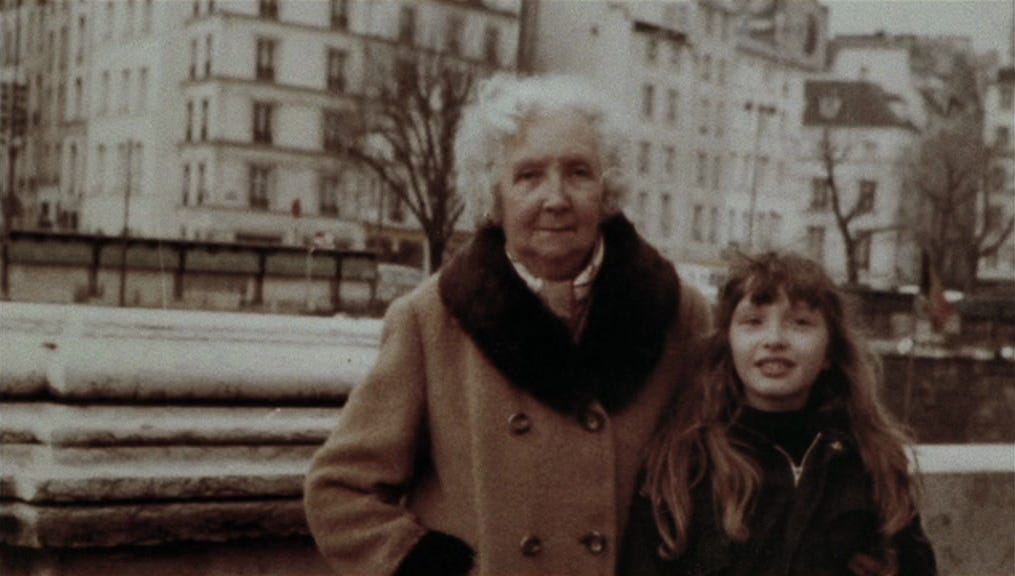◡◶▿ TIME07 | The "metabolist epic"
👶👩👵 Carjacking Linklater's time machine to go uncancel your hero. Plus: Belgian tip-off; Autumn term cut short. | New Systems of Time Week 7
📹 Unfound Peoples Videotechnic | Cloud-based filmmaking thought. ☁️
Dear eternal filmmaking students,
Belgians! They’re back. There’s an exciting - exciting! - collection of Belgian movies and accompanying filmmaker interviews on Avila and Sabzian, respectively. Great! Do that.
But one film that’s absent is Boris Lehman’s Don’t Stagnate (1973). It’s also Belgian. Exciting? Excitement could well be its guiding theme! Although not necessarily its form.
And next week, all going to plan, Don’t Stagnate will be the subject of our lesson. In case you want to watch it beforehand. If you search for it online using its French title, you might find it streaming on an obscure Russian website. Which is weird.
Missed a week? Joined late? Don’t worry about reading these lessons out of order. Each functions independently. They are sent in a sensible sequence but hardly reliant on it.
Today’s lesson is a big one. But it’s important. Especially if you’re thinking of making a Richard Linklater-type film about time passing! You should certainly spare a little of that time herein.
First, we’ll quickly recap last week’s lesson on Modes of temporal expressionism. We learned how, when extrapolating the inner weirdnesses of characters and themes as outer weirdnesses in the time-physics of your character’s universe, you might:
Apply these time weirdnesses only to one character (solipsistic temporal expressionism).
Apply them as “the norm” in the character’s world (architectural) or as an occasional phenomenon that disturbs some characters more than others, depending on their personality (meteorological).
Apply them to and through your production materials (film stock, call-sheet, labour, etc.) (mediaphysical).
By god, you’d better be consistent! Principled! Or the whole thing (filmmaker-audience contract) might fall apart.
Good good. And this week? We’ll explore how:
👦 Richard Linklater is just one proponent of the risky business of filming an actor-character across many years.
⚰️ This genre requires a contingent process that accounts for changes in the shape, velocity, and contractual demands of your long-term cast.
🚀 The genre may be considered a relative of “design fiction” for its play with consequence and its potential stretchability into the distant past and future.
⚡ Ideally, the filmmaker would have a time machine to film hard-to-reach temporal angles - but this would introduce a curious paradox regarding the filmmaker’s private life.
I recommend you print this one out and read it slowly across the week.
Metabolist epic
You can hear me deliver this lesson by scrolling up to the header and clicking Listen and/or the play ▸ button.
Richard Linklater filmed Boyhood (2014) over 12 years to achieve the authentic audiovisual effect of his actors ageing across the movie’s story.
Likewise, his Before Trilogy (1995-2013) was both set and filmed at nine-year intervals.
In television documentary, Michael Apted filmed a group of seven-year-olds in 1964, and returned to them every seven years until they were 63.
When two filmmakers do it, it seems like copying. Three filmmakers doing it makes a movement, and an indefinite number makes a genre! Well, an indefinite number of global filmmakers have created movies like this. In fact, it is the basis of many a home movie. Deliberately or not.
The genre is “metabolist epic.”
But making a metabolist epic as a professional/commercial production is a risky business. Changes of a social, technical, and environmental nature are now very rapid.12 So rapid as to require a contingent or reactive process as a feature.
For example, Linklater’s ongoing, 20-year production of a new picture has already lost its lead actor in a manner that may not have occurred under similar circumstances in 2014 or 1964: he got “cancelled”!
The project itself was young enough that Linklater could recast and reshoot. But what should he do if his new lead becomes unavailable much later in the film’s metabolic process?
Metabolist simulation
A metabolist epic↑ is a movie that is filmed over a long period of time at intervals that more or less match the intervals in the narrative, so that the cast and environment age authentically.
The risk with this type of production is “unforeseen changes.” Unforeseen changes of a social, technical, or environmental nature may make the original script or vision unfulfillable.
One solution is to build a contingent or reactive process into the production of the movie.
But generative AI offers an alternative: instead of following an individual or family across a proposed timespan that is over-optimistic about your cast’s longevity, you can do it all with simulations. Indeed, you can simulate a period that is wildly beyond the plausible lifespan of your actor’s public appeal or humanity as a species.
For example: Richard Linklater might use an AI simulation to follow a medieval family for 1,000 years as the generations descend through the Renaissance, Age of Enlightenment, and modern period, to whatever this is. And beyond, if we make it. (Or he could simulate this beyond as if humans didn’t have AI or climate crisis and all the rest to deal with.3)
Or longer still: the epochal soap opera. Following a Paleolithic dynasty from the Stone Age to the far-flung future with realistic family resemblances and realistic intergenerational trauma.
Or as a piece of AI-generated design fiction about how the Hawke-Delpy dynasty might first precipitate and then (heroically) mitigate the end of humanity.
Linklater could reverse-generate this fiction back to Hawke and Delpy’s respective ancestors waving bones at a rival pack of prehistoric hominins. And then work through three million years of agriculture, coal, plastics, reality TV, etc., to a major turning point in a hotel room on the Peloponnese coast.4
The risk, in this case, is that the technology (or the planet) might get “cancelled” or otherwise fail before the simulation has run and been transferred to DCP for distribution.
So, how could Linklater design ‘a contingent or reactive process’ as a deliberate feature of such a movie? Either by:
timing the end of the world within the movie to occur simultaneously with the end of our world outside the movie. (The ultimate expanded cinema experience.) Or
having the simulation run its own personal apocalypse scenario and building it into the story.
Will the passing of time ring true in such a simulation? You can simulate causality. You can simulate evolution. But can you simulate regret?
Metabolist time-road movie production
A metabolist epic↑ is a movie that is set and filmed at matching intervals over a long period of time. The cast and environment age authentically. If things go well. But if something life-changing should happen to them, then the whole script could be thrown off track.
It may not be uninstructive to offer an imaginary solution: the imaginary solution is that the filmmaker might invent a time machine. And use it to leap back over generations of a family. (Preferably a family through which runs a strong visual resemblance). And then:
sit with them across time.
(This will require the technology for the filmmaker to pause her own metabolisms). Or
leap from generation to generation without too much sitting around and ageing at the end of shooting days.
(This is a good alternative if the imaginary time machine does not have the facility to pause the filmmaker’s metabolisms.)
It is quite clear that the best time to revisit this evolving family line would be at the first birth of each new generation. This would make a neat cross-section through the tiered cake of the family’s ancestry.
A sequence or sequel set at each ‘first birth’ event would provide adequate narrative information and cinematic drama concerning:
the progress of the family,
its worries,
its conflicts, and the
technologies and
cinematographic disposition and
hairstyles of the epoch.
The insistent recurrence of birth scenes across a movie or sequence of movies could become quite nauseating. This may or may not be the point. It also does away with the “will they/won’t they” romcom trope, which can be retired.5 (The babies are proof that they will and they did.)
However, this mode of filmmaking would also be vulnerable to a common filmmaking paradox: the risk that the lowercase events and pressures of a movie’s production are far more interesting than the Uppercase plot contrivances of the movie itself.
Consider metabolist epic veteran Richard Linklater’s imaginary time machine, for example. Consider him using it to cover thousands of years in a family’s evolution. Consider only his experience of the process. For example:
Richard Linklater examining his wrinkles as he cruises in his time machine.
Richard Linklater applying moisturiser in assorted bathrooms across human history.
Richard Linklater feeling sort of left out as three million years of Hawke-Delpies age and expire around him.
Highly cinematic.
The issue with metabolism for time-travelling filmmakers is that you really need to see your subject’s metabolism through to get the full effect. But that the long-term nature of the project means your own metabolic tendencies may prove incompatible with those of the ancients and their descendants with whom you sit a while.
Please share your thoughts, queries, and exercises from this week’s lesson in the comments.
Closure
A quick bit of “housekeeping”: the present program on New Systems of Time will need to be truncated.
There will be just one more lesson after today’s. I’m sorry. I have had to take on additional duties around the campus. These additional duties make another month of newsletters quite out of the question.
Sorry, that also means that we didn’t cover “rhythmic templates” as I promised this week. That lesson is gone now. But it was essentially a summary of this.
The good news is that, because I am still able to deliver next week’s lesson, we will end on an even number. “Eight.”
~Graeme Cole.
(Principal)
🦋 Bluesky | ⏰ TikTok | 📸 Instagram | 😐 Facebook | 🎞️ Letterboxd | 🌐 unfound.video
Indeed, doommongers have proposed that the ‘durational production’ or ‘metabolist epic’ genre is a non-starter now that we’re so close to the brink of the end of it all.
We should mention also François Truffaut and his accidental metabolist epic, the Antoine Doinel movies with Jean-Pierre Léaud. The collaboration was decisively ended by Truffaut’s early death; although he did not plan any further visits to the Doinelverse, Truffaut categorically ruled out “killing the character off,” a decision that’s been vilified by Léaud’s superb longevity.
Stray thought: imagine a 2025 if podcasts had never been invented.
It gets more complicated if we accept, or the AI deduces, that Jesse is the real time traveller that he claims to be.
Indeed, putting this trope to bed is essential when filming an all-encompassing history of human evolution for which the answer is already clear: “everybody’s doing it, and will continue to until an environmental cataclysm puts an end to all that.”








